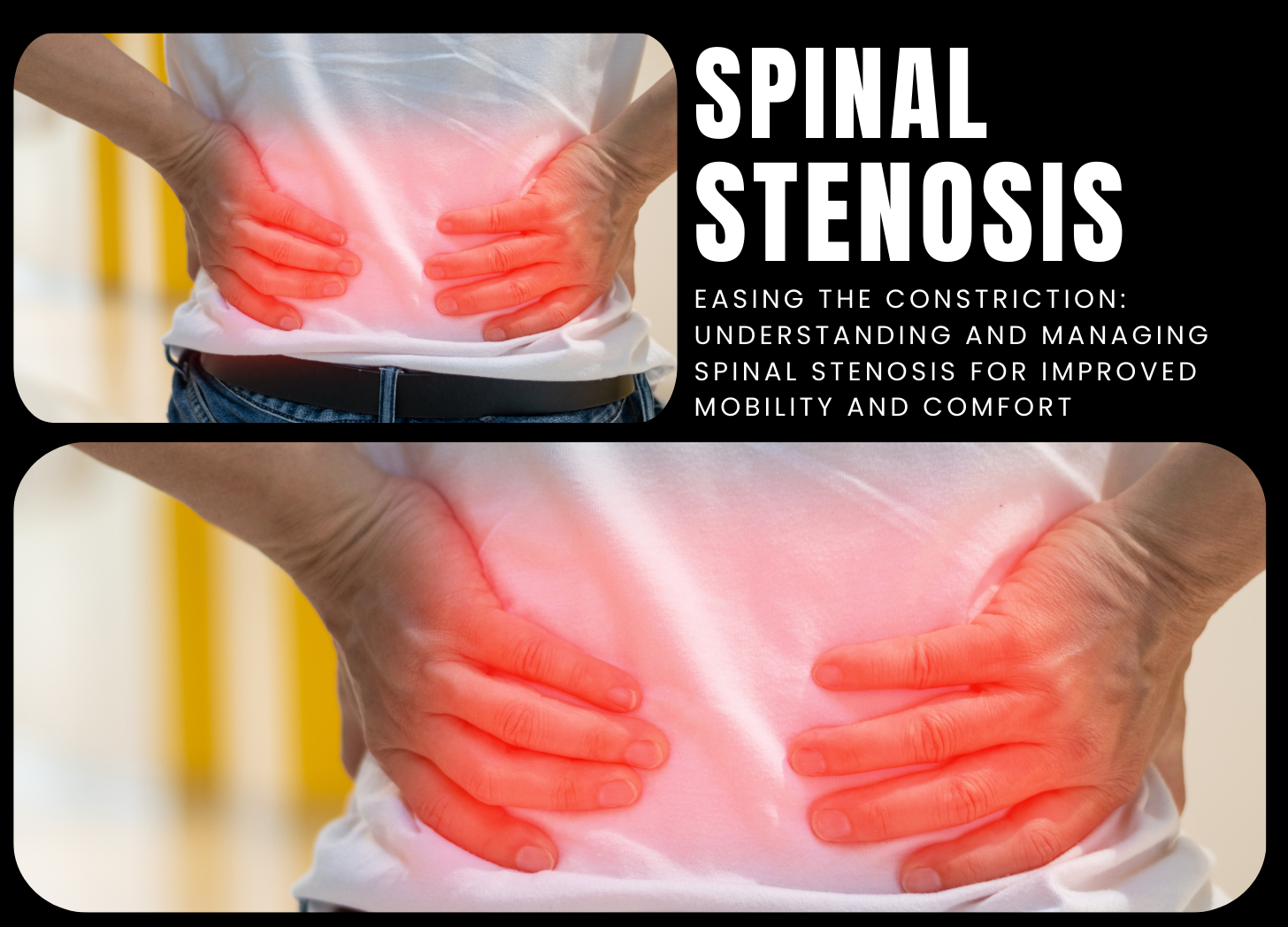Contact Us
Contact Us

Spinal stenosis is defined by a narrowing of the spinal canal, which can cause compression of the spinal cord and nerves. The spinal canal is a hollow region within the vertebrae through which the spinal cord and nerve roots travel. When the spinal canal narrows owing to numerous factors, it can cause symptoms such as pain, numbness, weakness, and trouble walking. Spinal stenosis mostly affects the lumbar (lower back) and cervical (neck) parts of the spine.
Spinal stenosis is caused mostly by degenerative changes in the spine that occur with age, such as bone spur production, ligament thickening, and intervertebral disc bulging or herniation. These alterations might limit the space available for the spinal cord and nerve roots, causing compression and discomfort. Other risk factors for spinal stenosis include congenital (existing at birth) spine abnormalities, prior spine injuries or surgeries, and disorders like osteoarthritis or rheumatoid arthritis.
Spinal stenosis symptoms may include pain, numbness, tingling, or weakness in the affected area of the spine, radiating pain or discomfort down the arms or legs, difficulty walking or maintaining balance (especially with lumbar stenosis), and bowel or bladder dysfunction (in severe cases). Spinal stenosis symptoms may intensify when walking or standing for lengthy periods of time, bending backward, or lifting heavy objects.
Spinal stenosis is typically diagnosed using a medical history, physical examination, and diagnostic tests such as X-rays, magnetic resonance imaging (MRI), or computed tomography (CT) scans to evaluate the spine’s structure and identify any narrowing or abnormalities in the spinal canal. Electromyography (EMG) or nerve conduction tests can be used to evaluate nerve function and identify sites of compression.
The goal of spinal stenosis treatment is to alleviate symptoms, increase mobility, and prevent the condition from worsening. To relieve pain and inflammation, conservative treatments may include nonsteroidal anti-inflammatory medicines (NSAIDs), muscle relaxants, or pain relievers. Physical therapy and exercise regimens may be recommended to improve strength, flexibility, and posture, as well as to relieve pressure on the spinal cord. Braces or canes may be prescribed for added support and stability while walking.
In cases of severe or resistant spinal stenosis that does not respond to conservative therapy, surgical intervention may be necessary to alleviate pressure on the spinal cord and nerves. To relieve symptoms and restore function, surgical techniques such as laminectomy (removal of the lamina, or back portion of the vertebra), spinal fusion (connecting two or more vertebrae), and decompression surgery (removal of bone or tissue causing compression) may be undertaken.
To summarize, spinal stenosis is a frequent disorder characterized by the narrowing of the spinal canal, which causes compression of the spinal cord and nerves. While spinal stenosis can cause severe discomfort and disability, early detection, conservative therapies, and surgical interventions, when needed, can help ease symptoms and improve quality of life for those affected by the condition.
References:
1.Mayo Clinic. (2022). Spinal Stenosis. Retrieved from https://www.mayoclinic.org/diseases-conditions/spinal-stenosis/symptoms-causes/syc-20352961
2.American Academy of Orthopaedic Surgeons. (2022). Spinal Stenosis. Retrieved from https://orthoinfo.aaos.org/en/diseases–conditions/spinal-stenosis
Post a Comment